Part 2 – La Crisis Climática (The Climate Crisis) – Gunyala, Panama
When I left Alaska, I thought I had lost my place as a witness documenting global warming. For nearly forty years I had watched and photographed some glaciers cascade into the ocean at alarming rates while others simply melted in place. Every year brought more extremes and records to the “Greatland”. Anomalies became patterns. Now I was in the mist and midst of a tropical rainforest and sea and hoped that this environment would give me a break from such stark evidence; that I would see the world as it should be, not what it will be.
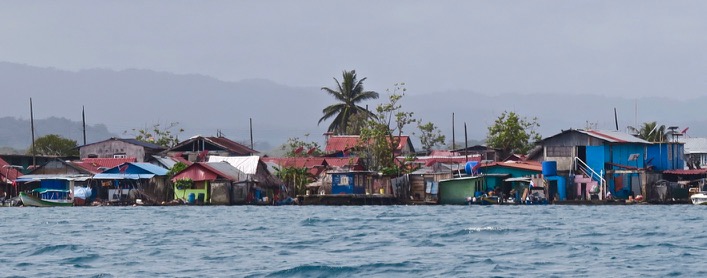
There has never been any doubt about global warming, at least not for me. The glaciers of the world are melting and oceans are rising at alarming rates. The last time CO2 was at this level in our atmosphere, the seas of the world were sixty feet higher. Then, the oceans took thousands of years to reach those levels. But today scientists warn that within the next 50 to 100 years, nearly every coastal community in the world will be planning to relocate to higher ground. But some communities are moving today – one of them right here in Panama where I once again bore witness to the creep of climate change.
As we bounced along the road in a Toyota 4X my ears perked up as our kayak guide Nemesio, a fifty year old native Guna, stated “this is where our island villagers will be re-located”. We promptly drove past a piece of bulldozed forest high above the ocean. The new community appeared to be well planned with each family receiving a lot served by sewer and water lines. Overhead, a new power line was being placed to electrify the settlement. The villagers are being forced from their traditional homes which have existed for generations on an island just off shore from the tiny Port of Barsuggum. As Nemesio explained, this would be the first of many Guna relocations. What I had sought to avoid was unavoidable. The culture and landscape I was going to visit was transforming and I was not prepared for the stark and profound changes I would see on the trip.
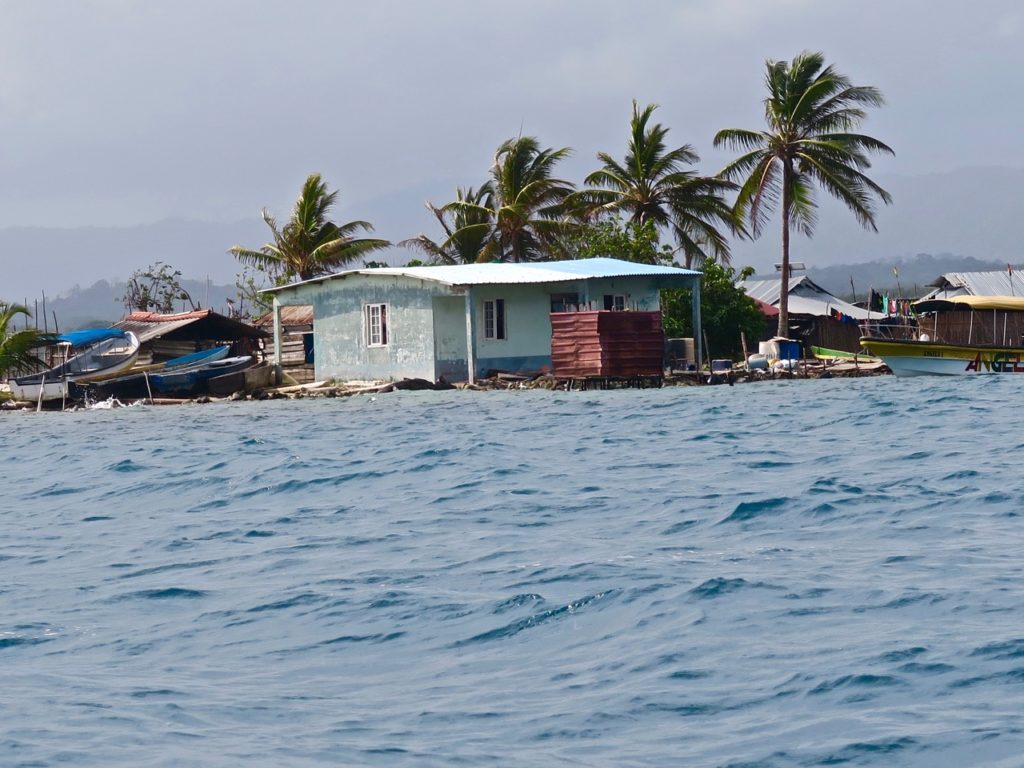
While loading the motor boats, I spied an authentic wooden dugout with a tiny paddle used to access the nearby island by the locals. These are common, I learned. The Guna people are spread across the vast east coast and tropical islands of Panama. It is an “semi-autonomous” region of Panama and the people enjoy a rich culture of ocean life, community and independence. They are tied to the land and protect it vigorously. While many Guna live on the coast, others have moved to Panama City over the past few generations.
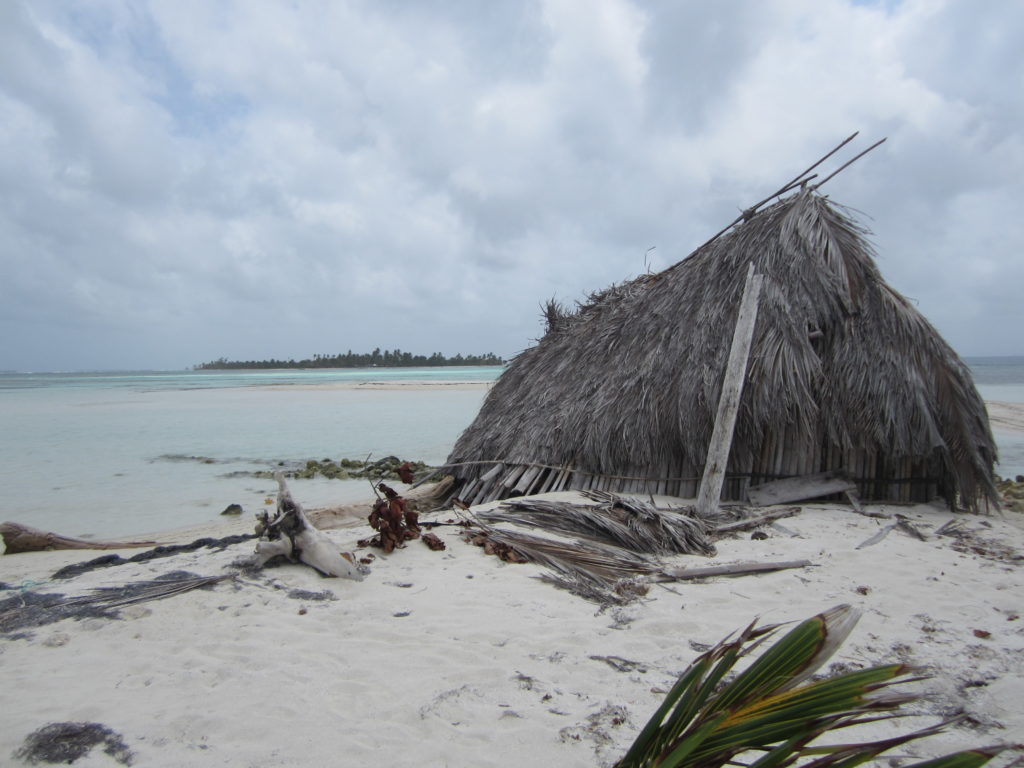
As we left the dock the ocean spray off the bow had me closed-eyed and clutching the seat as we sped across the whitecaps. I could barely make out the first island as we approached. A cluster of tiny, tin-hooded grass huts and homes smothered the shore as we pulled into a small dock to gather some supplies. I glanced at the shore and was amazed at how dense the humanity was. Each house was no bigger than a few hundred square feet with little or no path between structures. The ocean lapped at every doorstep. Hurricanes don’t occur here so that threat is mitigated, thus the community still exists as it has for a 100 years. As we pulled away, the island of homes seemed to float upon the sea. How could they live there any longer? I now understood the urgency of construction of their new village site. They were in a hurry. It wasn’t until our return trip that I was able to get a much better look at and understanding of the threatened island and its residents’ race to higher ground.
In my short span of ten days in Panama, I became more aware of the threat to coastal communities in other parts of the world. In Valdez no one talked about preparing for an inevitable second relocation of the town or bracing shoreline infrastructure. The first relocation was barely sixty years ago and the next is barely sixty years away.
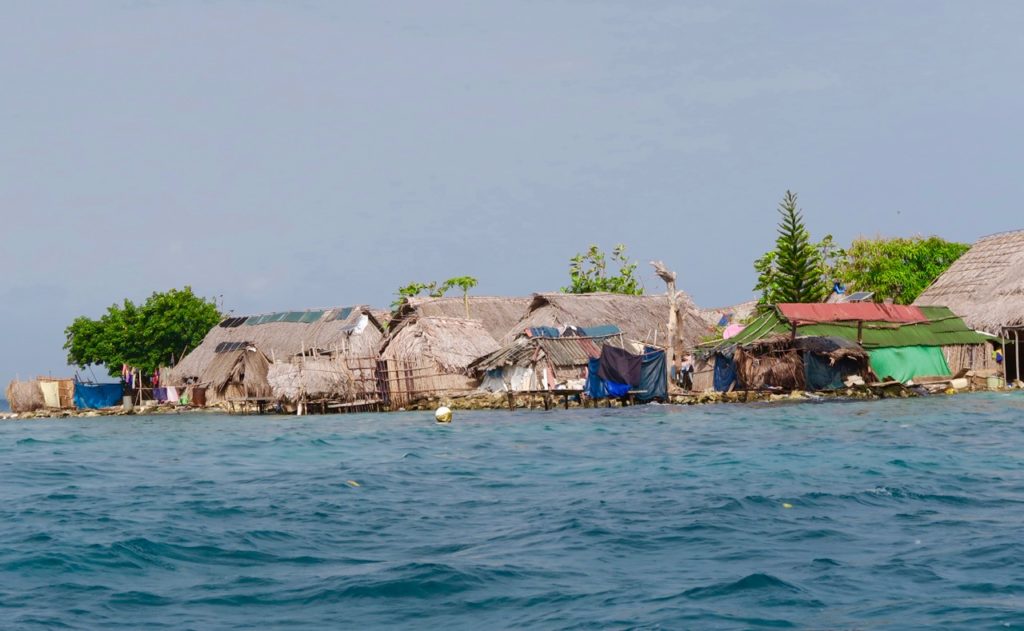
I have believed the science for decades and eventually stopped reading the endless studies proving again what we should already know. They don’t need studies in the Guna Yala. It is upon them. The simple creep of higher tides and wave action is slowly eroding and swallowing coconut trees and islands. Older huts lay in ruins and water while the newer camps are high and dry for now. Here, the Gana have seen islands disappear in their lifetimes and are now watching some of their villages disappear due to rising seas levels.
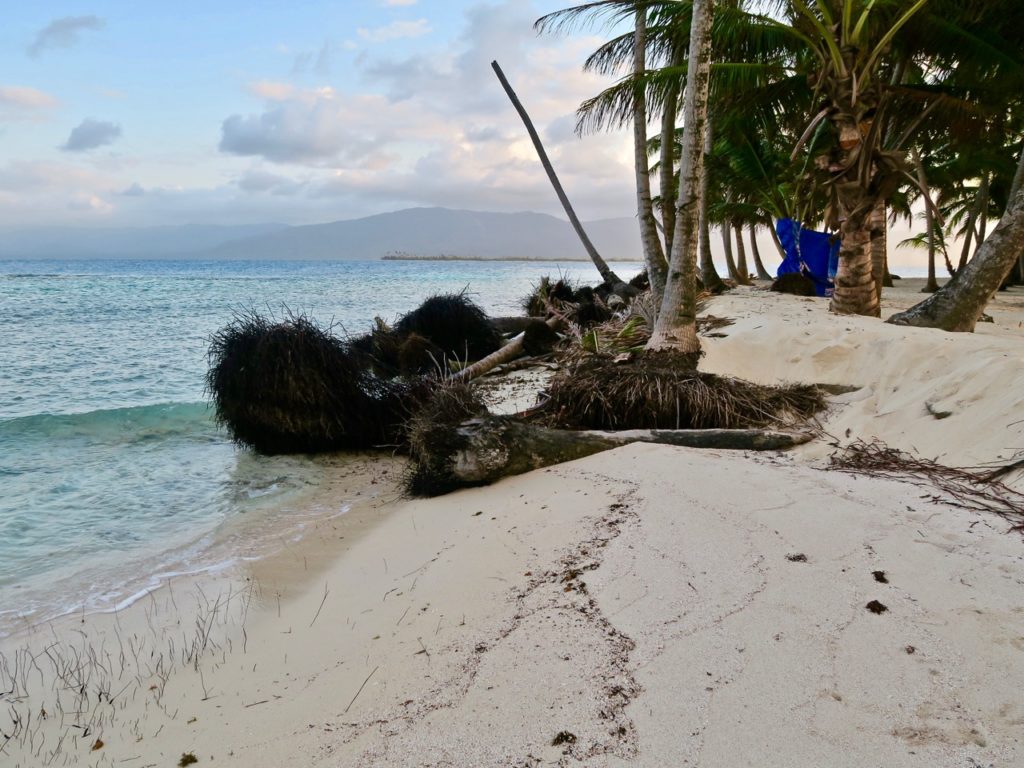
While some in the world are masked by the cash flow of oil to big oil tankers and into big cars, the Gana residents are largely innocent of the causes of the climate-calamity. Other parts of the world, mainly the United States, are responsible for the tragedy. We are addicted to oil and plagued with consumerism. The U.S. has exported the production of its consumer goods to China and India since the 1990’s to avoid blame and now some blame them. A US resident still has the largest carbon footprint of any other resident of the world.
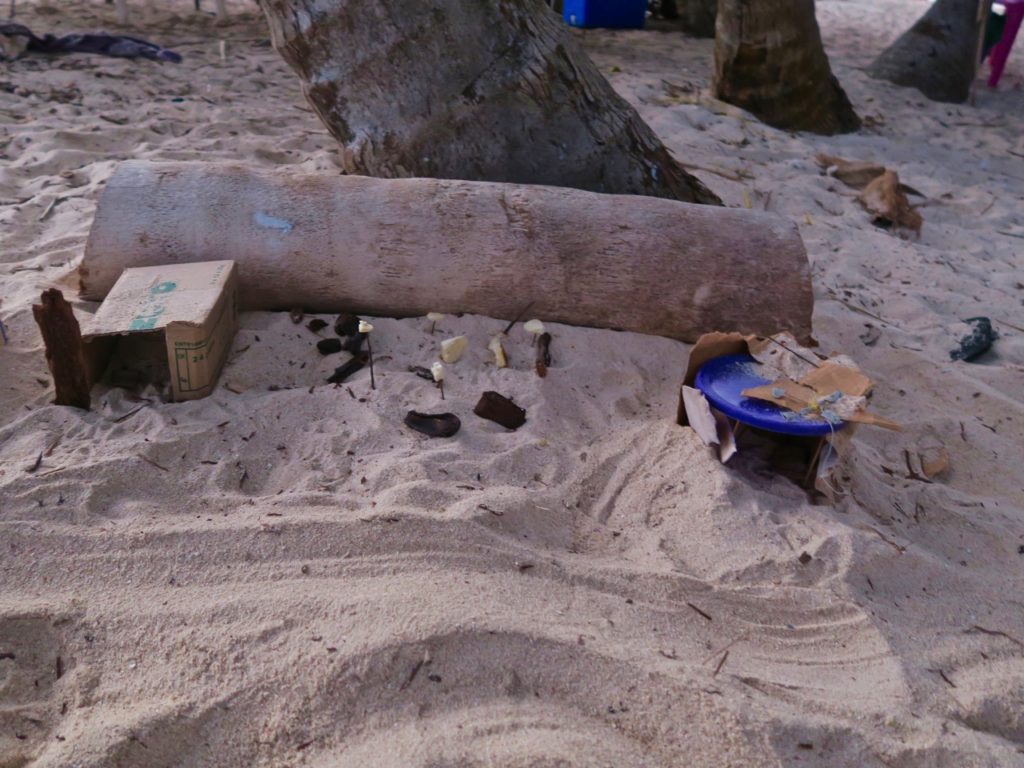
The garbage and litter filling the Guna Yala shores did not come from Panama or the indigenous people of this region. When the residents clean their beaches, the next tide brings in another wave of candy wrappers and empty water bottles. Plastic keeps coming on shore in micro and macro bits. Winds then blow what’s left deep across the islands. Most the beaches were “barefoot” clean and pristine, but there was always the presence of plastics and other refuse.
While the appearance of little islands of Eden seems romantic and ideal, it has not come without a cost. The islands we camped had been denuded of mangroves to reveal the white sands we see and enjoy today in ads while the uplands were cleared of all brush and trees except for coconut trees. A sort of desertification process dries out the island and creates the eye-popping beaches and islands. This process will unfortunately accelerate erosion as rising seas and waves slowly erode and cover the islands. I saw plenty of evidence of this. The highest point on most of the island is only a foot or two above high tide.
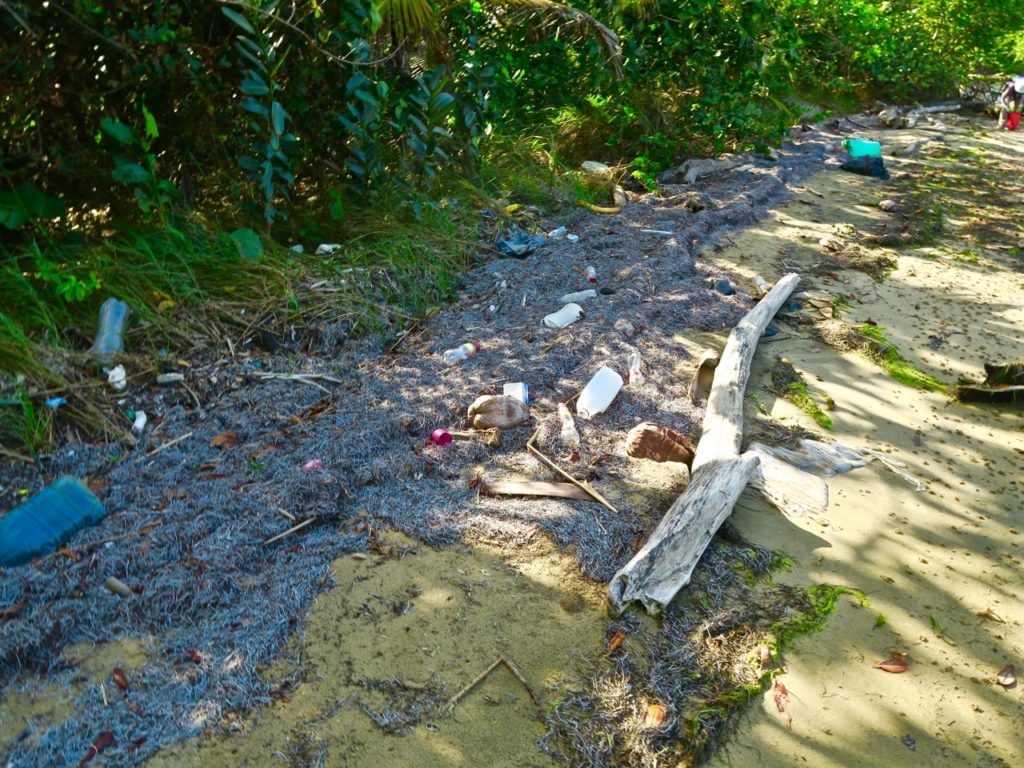
Panama has another current issue that is equally concerning. A two-year drought threatens the fresh water supply to such a degree that the Panama Canal’s operation is at risk due.
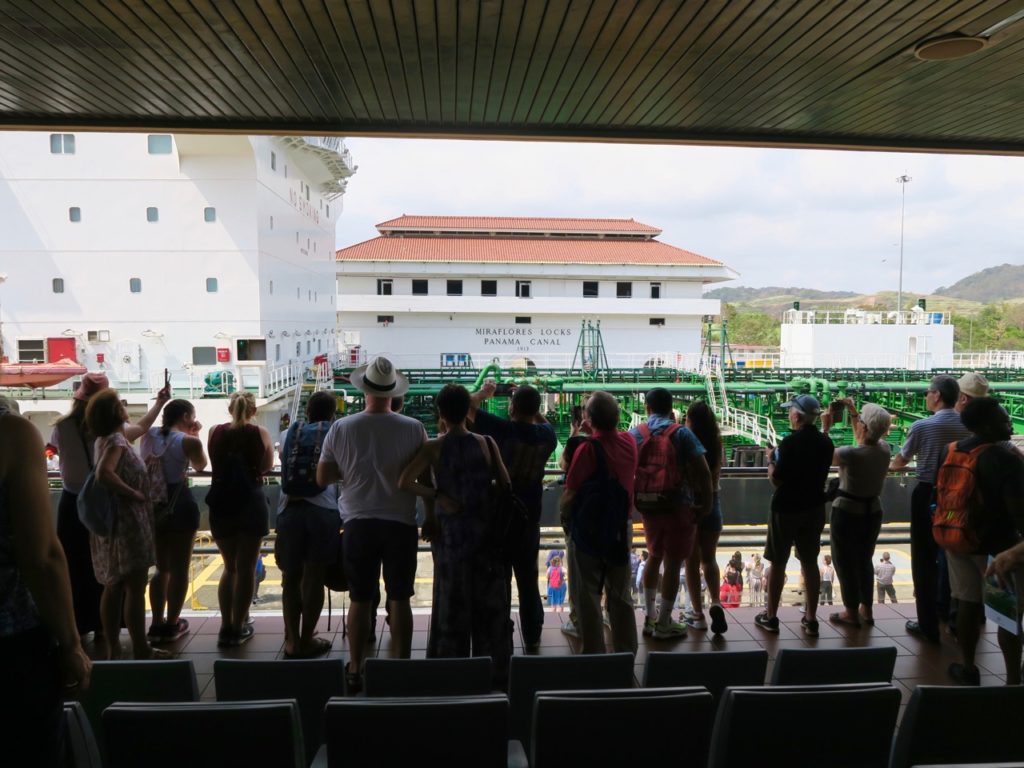
I hope to return to Panama in the future and immerse myself more in the warm water of the Caribbean and the friendship of the Gana. In the meantime, the rest of the world should take notice of our troubled oceans and the people who live on those shores.
Matt Kinney
March 15, 2020.
